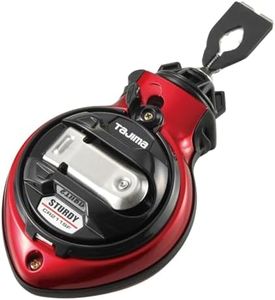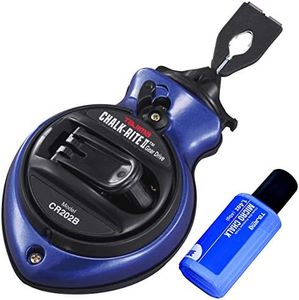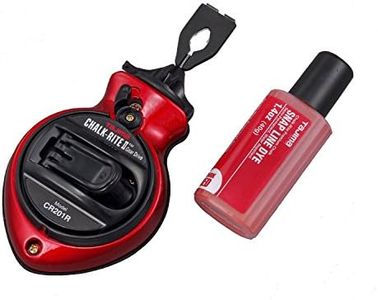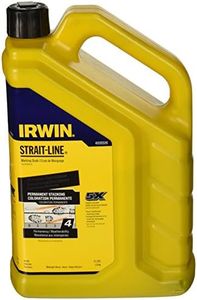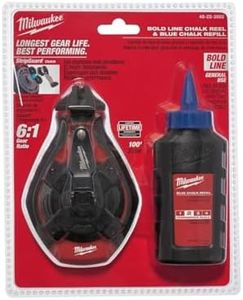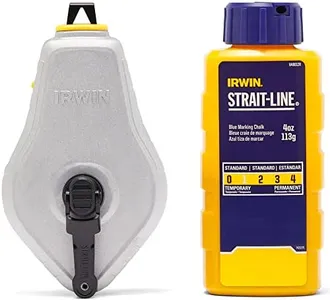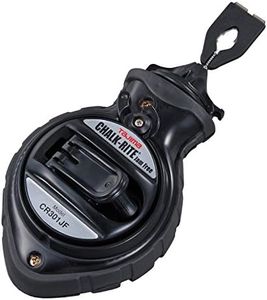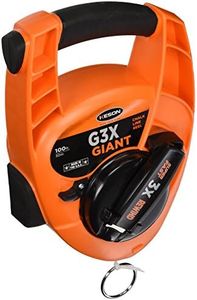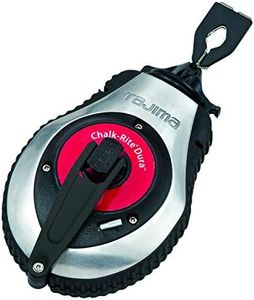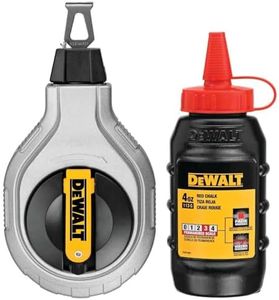We Use CookiesWe use cookies to enhance the security, performance,
functionality and for analytical and promotional activities. By continuing to browse this site you
are agreeing to our privacy policy
10 Best Chalk Lines
From leading brands and best sellers available on the web.Buying Guide for the Best Chalk Lines
Choosing the right chalk line can make a huge difference in any building or renovation project where you need straight, accurate lines for marking surfaces. Chalk lines are simple but essential tools for marking straight lines over distances on various surfaces such as wood, drywall, or concrete. When you're shopping for a chalk line, it helps to consider a few key features so you can find one that suits the type of work you do and the job environment.Line LengthThe line length is how long the string inside the chalk line tool is, and it affects how long a line you can mark in one pull. Chalk lines come in different line lengths, ranging from short ones (around 25-30 feet) that are great for small indoor projects, to medium (50-75 feet) for most professional uses, and extra long (100 feet or more) for large outdoor or construction projects. To pick the right one, think about the surfaces and spaces you commonly work with—a longer line offers more flexibility but can be more cumbersome on smaller tasks.
Line ThicknessLine thickness refers to how wide or narrow the chalked line will be when you snap it. Thinner lines (around 0.5 mm) make more precise marks, which are perfect for finish carpentry or detail work. Medium thickness (about 1 mm) is the most versatile for general purpose use, while thicker lines (over 1.5 mm) are best for rough construction where visibility is more important than precision. Let the detail needed in your job guide you—if you need accuracy, go thinner; if you need the line to stand out, go thicker.
Chalk CapacityChalk capacity is how much powdered chalk the tool can hold. A larger capacity holds more chalk, which means you can make more lines before needing a refill, making it convenient for big jobs. Smaller capacities are lighter and less bulky, good for occasional or small-area work. Your typical project size and how often you want to refill should help you decide.
Gear Ratio (Rewind Speed)The gear ratio tells you how quickly the string rewinds back into the case after use. A higher gear ratio (like 3:1 or 6:1) means fewer turns to reel in the string, making the tool quicker and easier to use, especially on larger jobs. For occasional or small tasks, the speed may not matter as much, but if you plan to use the chalk line repeatedly, a faster rewind can save time and effort.
Durability/Case MaterialThe case of a chalk line tool is usually made of plastic, metal, or a combination. Plastic cases are lightweight and sufficient for light-duty work, whereas metal or reinforced cases offer much better durability, ideal for heavy use or tough job sites. If you work in challenging environments or drop your tools often, prioritize durability; for infrequent, indoor, or hobby use, a simple plastic case is just fine.
Hook TypeThe hook at the end of a chalk line lets you anchor it to surfaces, so its size and shape matter. Standard hooks work on nails or edges, while specialty hooks can grab onto different surfaces like brick, stone, or steel. If you mainly mark wood or drywall, a basic hook is enough, but if you often work with masonry or steel, look for a more versatile or larger hook style.
